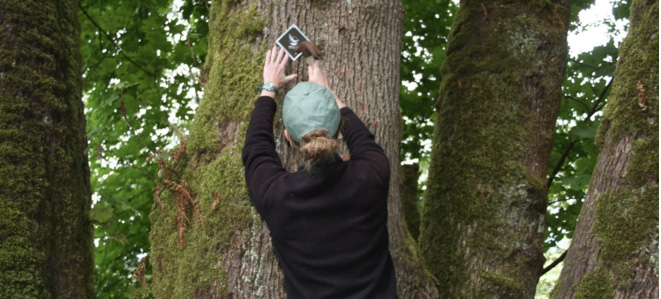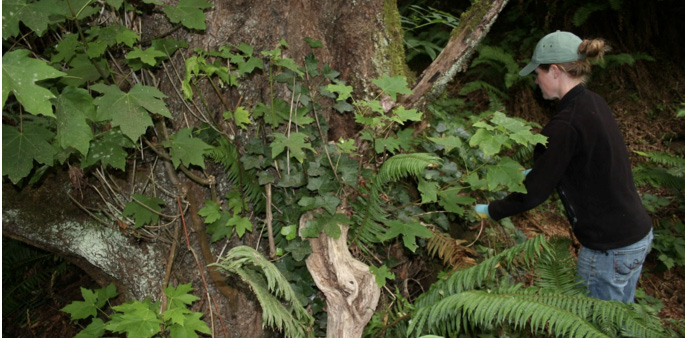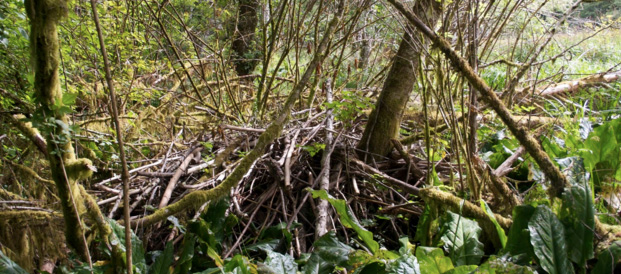
American speedwell (Veronica Americana)

One day in June, NCLC Conservation and Stewardship Manager Amy Hutmacher and I—the scrappy college intern from the great University of Oregon—took a little trip to Crosel Creek. This was a monitoring visit, meaning our mission was to observe the state of the land, looking for evidence of encroachment, invasive species, and overall species diversity.

Monitoring visits are also key to learning more about the land and documenting any changes that have taken place since the last visit. NCLC completes these monitoring visits for all of its properties at least once a year, which is quite an impressive undertaking. Many of the properties up and down the coast have volunteer land stewards who live close by and who check up on the property from time to time. Crosel Creek doesn’t have a designated land steward—meaning, it doesn’t get as many visits.

Himalayan blackberry (Rubus armeniacus)
Amy and I started our morning at the northwest corner of Crosel Creek. With rubber boots, a hand saw, loppers, gloves, and trash bags, we were ready for anything. The northwest corner is accessible to vehicles by way of a public gravel road—which is both good and bad for NCLC. Although it provides us with easy access to the property, it also provides the public with easy access to dump on NCLC land. In this small corner Amy and I found a pile of razor clam shells, large fluorescent lightbulbs in their boxes, drink containers, and much more detritis. On past visits, staff have found elk and deer carcasses. We also saw a fire pit contained in a tin tray and evidence of some chainsaw action.







We cheerfully explored the forest, surrounded by old growth and grateful for dry ground. We located the inholding on the property. Amy explained to me that inholdings are chunks of privately owned land, typically enclosed in national and state parks and forests, that predate the land’s designation as public. We pondered the origin of this inholding within this privately owned (by NCLC) property. After a bit more wandering, we made our way back, through the forest, across the log, along Crosel Creek, and up into the cow pasture.We never did see those cows.
Charlotte Blakesley is volunteering as a stewardship intern for North Coast Land Conservancy this summer. A native of Arch Cape and a Seaside High School graduate, she just completed her freshman year at UO.
Comments